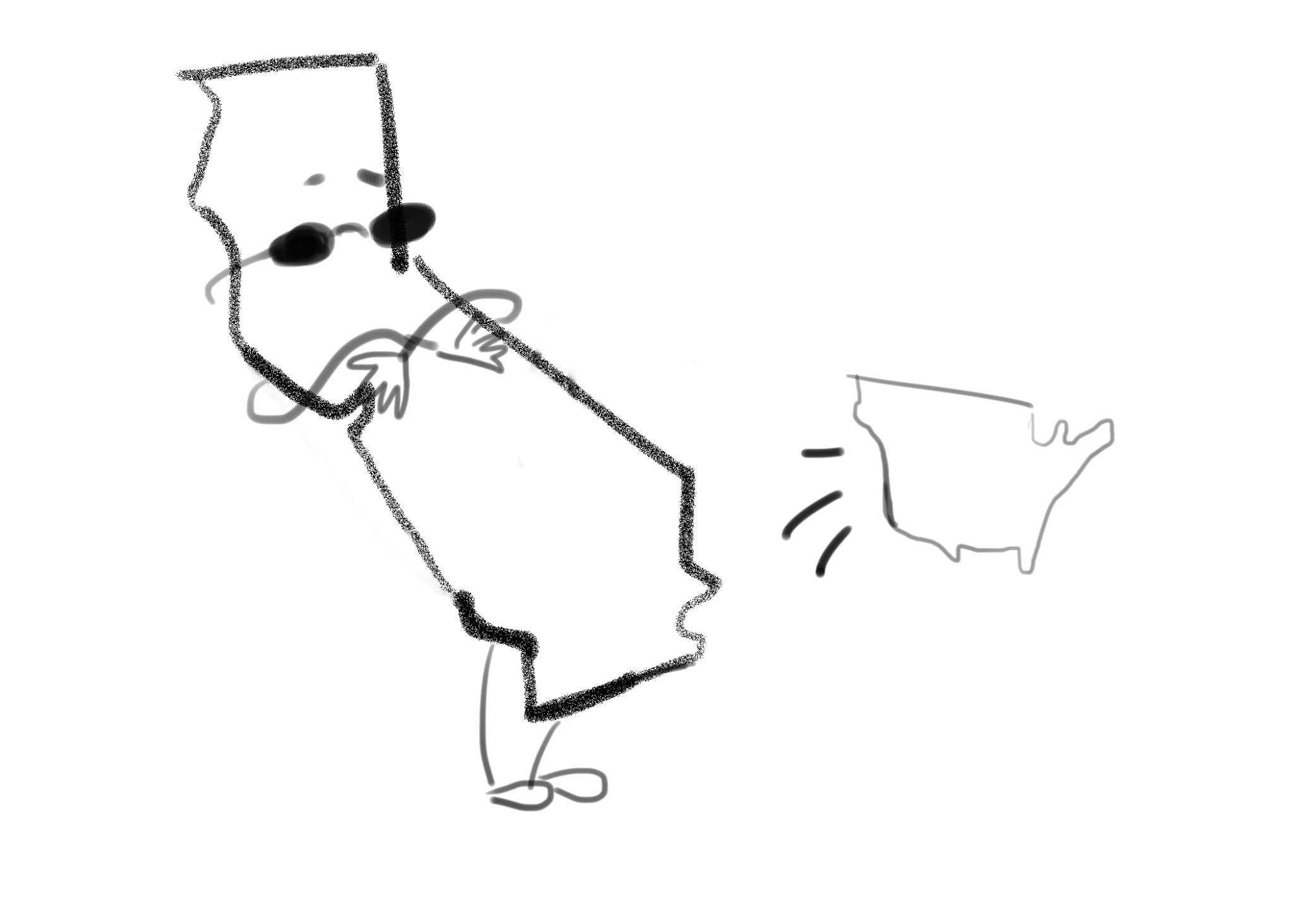
According to sites like Great Point Properties, for all of California’s destination power, it sure is hard to say what the ethos of the contemporary state is. Everyone is coming there. The real estate in places like Orange County, Silicon Valley and Santa Barbara only appreciates. Tourists come to enjoy the balmy weather, the beaches, Hollywood. And I get it. The weather is amazing, the ocean is close, there’s a lot going on in LA and San Francisco. The Mexican food doesn’t get better in the U.S. and don’t even get me started on In-N-Out. But somehow I can’t help but feel that all of the shiny tourist brochure hype is just the surface of something a lot deeper. What that something is, I don’t know, and I’ve lived there my whole life. My family’s roots in the state run deep by California standards, and that’s the closest I’ve come to identifying what the ethos of the place is: something’s out there.
What forms the anatomy of a place? Well, there’s the physical location, but it’s certainly a bit more than a set of coordinates, or a series of directions to a particular space. Who would describe a place like that while standing quietly in the redwoods of Big Sur or while peering off the edge of the Grand Canyon’s North Rim? There is something else there, when one stands on the precipice and looks first down and then across. It’s an experience that connects you to larger forces of nature that have been operating for millions of years.
In the Western United States, the starting point in understanding the spirit of the place is almost always in the geology. The Grand Canyon, Monument Valley, Yosemite, Zion and Carlsbad Caverns are all geological phenomena. The biological component so important in places like the redwoods is only possible as a result of the unique geological circumstances of each location. Even the great historical element of place in the West is geological in its origins. What would California be without the Gold Rush, or my family’s native Cibola County, New Mexico without the uranium industry? Would Silverton, Colorado be the strange mountain town it is without its namesake metal? Farming, ranching, mining — the great frontier economic ventures are tied to geology.
In the sparsely populated badlands of Cibola County and adjacent McKinley County and it’s Pismo Beach are some sandstone bluffs that were formed gradually in inland seas between 63 and 138 million years ago. Their very long story is found in their layers; prehistoric shark teeth are occasionally found there, and humans have carved things on them from the Anasazi petroglyphs to the conquistadors and the early American settlers in the area. The same is true for the sedimentary rocks with their igneous intrusions across the West. Not only is a place a result of a complex layering of emotional, and cultural elements — it is literally layered in the rocks upon which the landscape sits.
So what are the layers of California?
The title of the now-legendary Elna Bakker’s book “An Island Called California” gets it right. California is an island surrounded on all sides by natural barriers: the Pacific to the west, the Sierra Nevada to the northeast and the Mojave desert to the southeast. The state boasts an incredible diversity of natural landscapes. What could be more different than an alpine meadow in the Sierra Nevada than the tiny, scrubby Santa Barbara Island?
California is exceptional in human terms as well. The pre-European indigenous peoples of North America achieved their greatest linguistic and cultural diversity there and today a whopping 12 percent of the U.S. population lives in California, the largest population of any state.
So for all this great history, all the unique elements of California’s past, why are we so focused on the glossy surface? The answer lies in the way different places approach the act of preservation.
Places are of course not static. The glaciers responsible for so many of the distinctive features of the Sierra Nevada are of course no longer there, and an existential problem of one kind emerges when we expect a place to remain fixed in time. But California’s problem is the opposite. No city planning in a place like Irvine, my cookie cutter hometown, is concerned with a nod to the past. The master-planned, resort-like communities of Southern California are unique only in the sense that they are most widely constructed there. And it’s no wonder, given that the norm in California is that everyone has come there from somewhere else: the east coast, foreign countries, the Midwest. The procession into the future is fastest there, where this uniquely American problem is condensed and accelerated to a dizzying speed. How ironic that California, the vacation destination, where lifestyle is more important than career and beach days and organic food reign supreme, is constantly bulldozing itself over.
It’s an awful shame that all this has supplanted the haphazard and strange story of “Old California.” I think about the character Lyman Ward, the curmudgeonly historian of “Angle of Repose,” Wallace Stegner’s great western novel. What would Lyman, a crippled recluse in his ancestors’ Grass Valley home, indignant at all the historically ignorant who surround him, think about all the “progress?” Something tells me he wouldn’t be very happy.
Hunter Craft | hunter.craft@yale.edu







